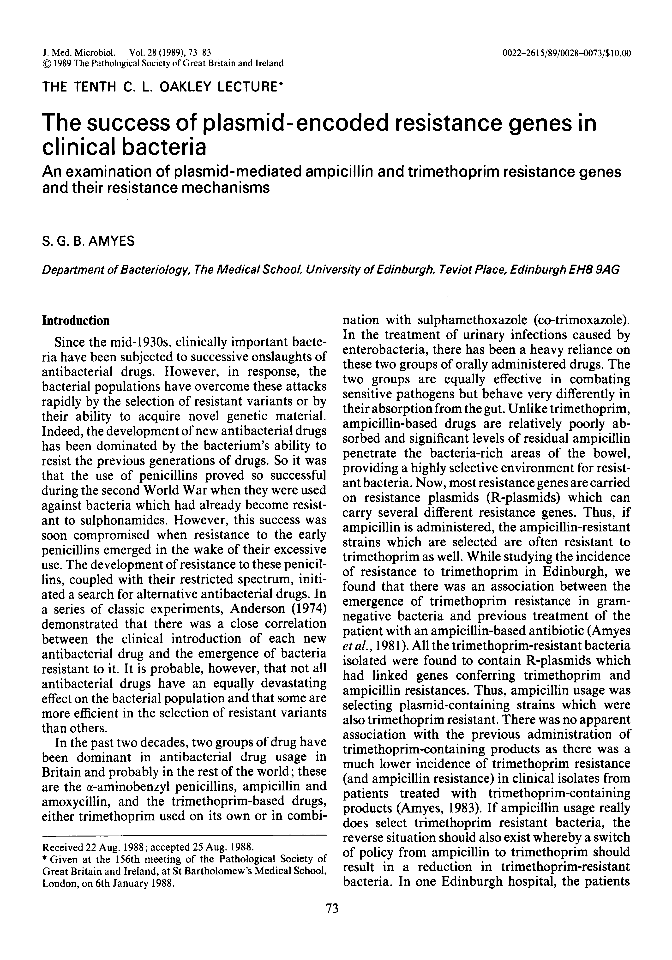
Full text loading...

THE TENTH C. L. OAKLEY LECTURE * : The success of plasmid-encoded resistance genes in clinical bacteria: An examination of plasmid-mediated ampicillin and trimethoprim resistance genes and their resistance mechanisms, Page 1 of 1
< Previous page | Next page > /docserver/preview/fulltext/jmm/28/2/medmicro-28-2-73-1.gif
There is no abstract available.

Article metrics loading...

Full text loading...
References


Data & Media loading...
